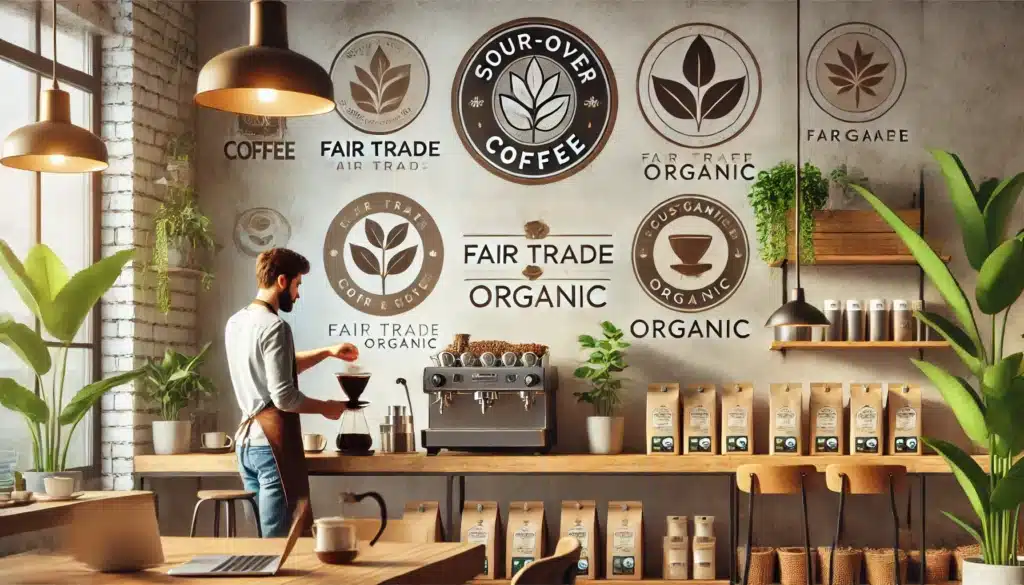The coffee industry is constantly evolving, from new brewing techniques to innovations in sustainability. As global demand for coffee grows and consumer preferences shift, the future of coffee holds exciting possibilities. What are the trends that will shape the coffee market in the coming years?
In this article, we’ll explore the key trends that are brewing in the coffee industry — from sustainable practices to technological innovations.
1. The Rise of Specialty Coffee
The demand for specialty coffee continues to grow. More and more consumers are willing to pay a premium for:
- High-quality beans with unique flavor profiles
- Single-origin or direct-trade coffee
- Transparency in sourcing and production
Specialty coffee shops and roasters are becoming staples in cities worldwide, promoting craftsmanship and quality over convenience.
2. Increased Focus on Sustainability
Sustainability is no longer optional; it’s essential. As the environmental impact of coffee production becomes clearer, both producers and consumers are looking for ways to reduce waste and carbon footprints.
Key areas of focus include:
- Eco-friendly packaging (compostable bags, minimal plastic)
- Water conservation in processing
- Sustainable farming practices (shade-grown, organic, fair trade)
Consumers are increasingly drawn to brands that prioritize environmental responsibility.
3. Technology-Driven Coffee Production
From precision brewing to data-driven farming, technology is revolutionizing the coffee industry.
Key innovations include:
- Smart coffee machines with app integration
- Robotic harvesters to reduce labor costs
- AI-powered quality control to ensure consistency in beans
As technology advances, coffee production is becoming more efficient, accessible, and precise.
4. Plant-Based Alternatives
As more people adopt plant-based diets, the demand for dairy-free milk alternatives is skyrocketing.
Popular alternatives include:
- Oat milk, known for its creaminess and sweetness
- Almond milk for its nutty flavor
- Soy milk for its rich texture and versatility
These alternatives are now available in almost every café, catering to both vegan and lactose-intolerant customers.
5. Coffee Subscription Services
The convenience of having freshly roasted coffee delivered to your door is driving the growth of coffee subscription services.
Consumers can:
- Explore new roasts and blends each month
- Support small-batch roasters
- Enjoy the convenience of customized delivery schedules
Subscription models are becoming an increasingly popular way for coffee lovers to discover new favorites.
6. Cold Brew and Nitro Coffee
Cold brew coffee is taking over as a refreshing, smooth alternative to hot coffee. Served over ice or in cans, it has become a popular choice in the summer months.
Nitro coffee, infused with nitrogen gas, adds a creamy, foamy texture and is becoming more widely available in cafés and ready-to-drink cans.
This trend is set to continue, with even more variations of cold coffee drinks hitting the market.
7. Coffee and Health Benefits
As people become more health-conscious, coffee’s potential health benefits are attracting attention.
Recent studies highlight coffee’s:
- Antioxidant properties
- Heart health benefits
- Link to a reduced risk of certain diseases (e.g., Parkinson’s, type 2 diabetes)
Coffee is now viewed not only as a pick-me-up but also as a part of a healthy lifestyle.
8. The Influence of Millennials and Gen Z
The younger generations — particularly Millennials and Gen Z — are driving changes in the coffee market.
They are:
- More interested in sustainability and ethical sourcing
- Seeking unique, high-quality experiences (e.g., craft coffee, exotic origins)
- Willing to pay more for products aligned with their values
This demographic is helping shape the future of coffee by prioritizing authenticity, quality, and social responsibility.
9. Coffee’s Role in Social Spaces
Coffee is more than just a beverage; it’s a social connector. The rise of co-working spaces, specialty coffee lounges, and coffee-centric events is transforming coffee shops into community hubs.
They are:
- Spaces for collaboration and networking
- Offering a blend of productivity and relaxation
- Becoming part of a larger lifestyle culture
Coffee is now intertwined with social interaction and community building.
10. The Future of Coffee Prices
As climate change impacts coffee-growing regions, the price of coffee is expected to rise. Factors influencing price increases include:
- Extreme weather events (droughts, floods)
- Increased demand from emerging markets
- Rising labor costs
While this may make coffee more expensive, it also creates an opportunity for innovation and sustainability within the supply chain.
Final Thoughts: A Thriving, Evolving Market
The coffee market is not static — it’s continuously adapting to consumer preferences, environmental challenges, and technological advancements. As sustainability, quality, and innovation take center stage, the future of coffee looks brighter and more exciting than ever.
By staying informed about these trends, coffee lovers can support a more conscious, sustainable, and flavorful coffee culture.







